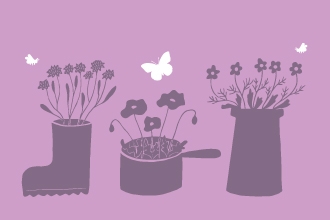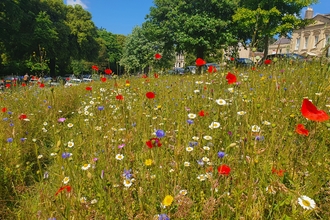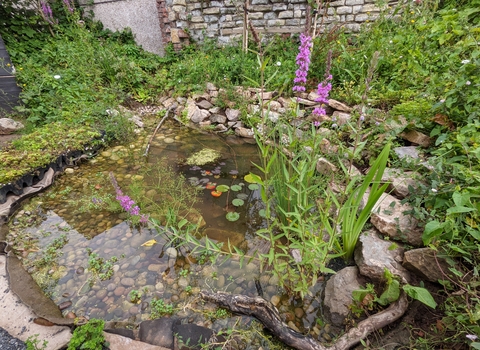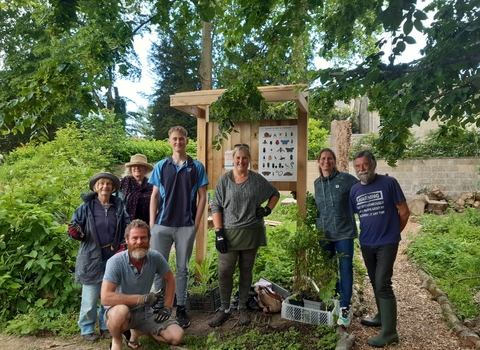
Stephanie Chadwick
Team Wilder Create a Mini Meadow at home
Convert a bit of your lawn at home
The benefits of creating a mini meadow are outstanding to people and wildlife.
- Mini meadows are beautiful! They're much more interesting and full of life compared to a plain grass lawn.
- Low maintenance lawns! Once planted in, just one cut per year.*
- Habitat and food for numerous bugs, bees, butterflies, hoverflies, beetles, moth. Power to the pollinators!
- These bugs feed more wildlife, including birds, bats and hedgehogs.
- Pollinators pollinate the wildflowers, which self seed to help spread.
- Do your bit for local wildlife, connecting green spaces.
*A mini meadow is quite labour intensive at the start, taking an adult a morning or afternoon to prepare and plant the area. With more adults it is quicker and a great way to connect with nature in your garden. Once the mini meadow is growing only one cut per year is recommended, with no other maintenance required. Just to admire the beauty and wildlife!
10m2 Mini meadow packs from Grow Wilder
The great news is that this pack is suitable for beginners: you don't need any wildflower knowledge or experience to make this work. Everyone should be able to experience the benefits of a mini meadow.
The Grow Wilder 10m2 or 25m2 mini meadow packs are designed for gardens, of any shape, at home. It has taken out the guesswork of what to plant with this tried and tested mix of wildflower seeds and plug plants. Check out mini meadows at Grow Wilder, Clifton Hill meadow with WBCA, College Green and St Mary Redcliffe in Bristol for working examples of this mix.
25+ species are included.
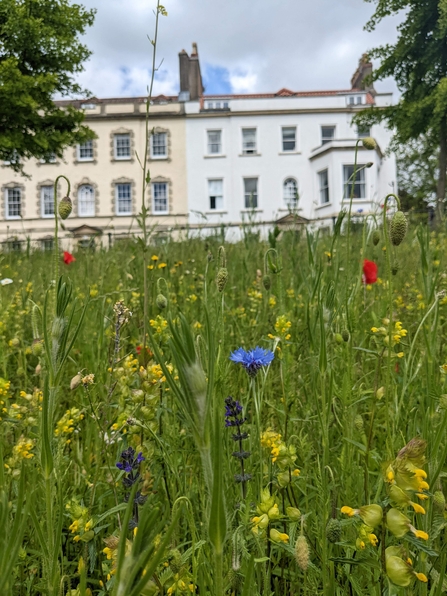
West Bristol Climate Action
Instructions to create your mini meadow
When: Ideally on a dry, sunny day - but we know British weather doesn't always allow this!
Spring planting: February - May
Autumn planting: September - November
Where: Gardens at home, your patch can be any shape you prefer. You will be turning the turf to hold back the grass whilst the seeds germinate and the plug plants get established. The grass will gradually come back and is an essential part of a wildflower meadow. Many species of butterfly depend on different wild grasses.
How: More detailed instructions on how to create your mini meadow,
1. Mow the grass as short as possible and remove cutting
2. Cut flat turves about 10cm thick and invert so the grass is completely buried and the bare soil is on top. Do this over the whole area. Gently level with a rake if necessary but avoid pulling grass back to the surface.
3. Mix the seed with a quantity of compost or sand to help spread evenly over the area.
4. Sow the seed evenly over the area (no need to rake as you will walk over the area as you plant the plug plants and this will push the seed into good contact with the soil).
5. Ensure your plug plants are well-watered then plant across the area ensuring they are planted with the soil very slightly covering the top of the compost and they are not on mounds. If the soil is dry then water the plug plants when they are in the ground.
6. Sit back and wait for your meadow to grow!
7. Enjoy the flowers and look out for the bees, butterflies etc visiting You may wish to use an app such as iNaturalist to help identify the wildflowers as they appear and the bugs that visit.
8. Cut once a year in early to mid-Sept and remove the cuttings, you can also leave part uncut as overwintering habitat for bugs.
Ongoing tips and advice
Diverse mix: This seed and plug plant mix contains a variety of 25 species. Not all species will survive due to varying local conditions. Some species will thrive more than others, so you'll be starting with a good diverse mix.
Change is normal: All Meadows of all sizes change year to year. The annuals give extra colour in the first year or two (as they need bare soil to germinate) and gradually the perennials will take over. Cornfield annuals are not meadow plants but are added to give extra colour whilst the perennials develop.
Grass is good: Remember that the grass will gradually come back and is an essential part of a wildflower meadow. Many species of butterfly depend on different wild grasses.
Sowing & planting on bare soil for a mini-meadow or border – dig out strong-growing perennial weeds such as bindweed, creeping thistle, creeping buttercup, nettles, stale seed bed technique,
Cutting once per year is recommended, but you could do early march cut if there was a mild winter and you wanted to.
iNaturalist is a great app to monitor and identify plant and wildlife species.
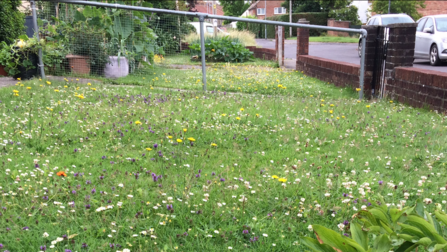
Dean Griffith
Resources

(C) Hannah Bunn
Be part of Team Wilder
All actions for nature collectively add up and creates life for people and wildlife.
Share your actions for nature, like Tom by sharing and tagging @avonwt on social media and
Log your actions for nature on the map


